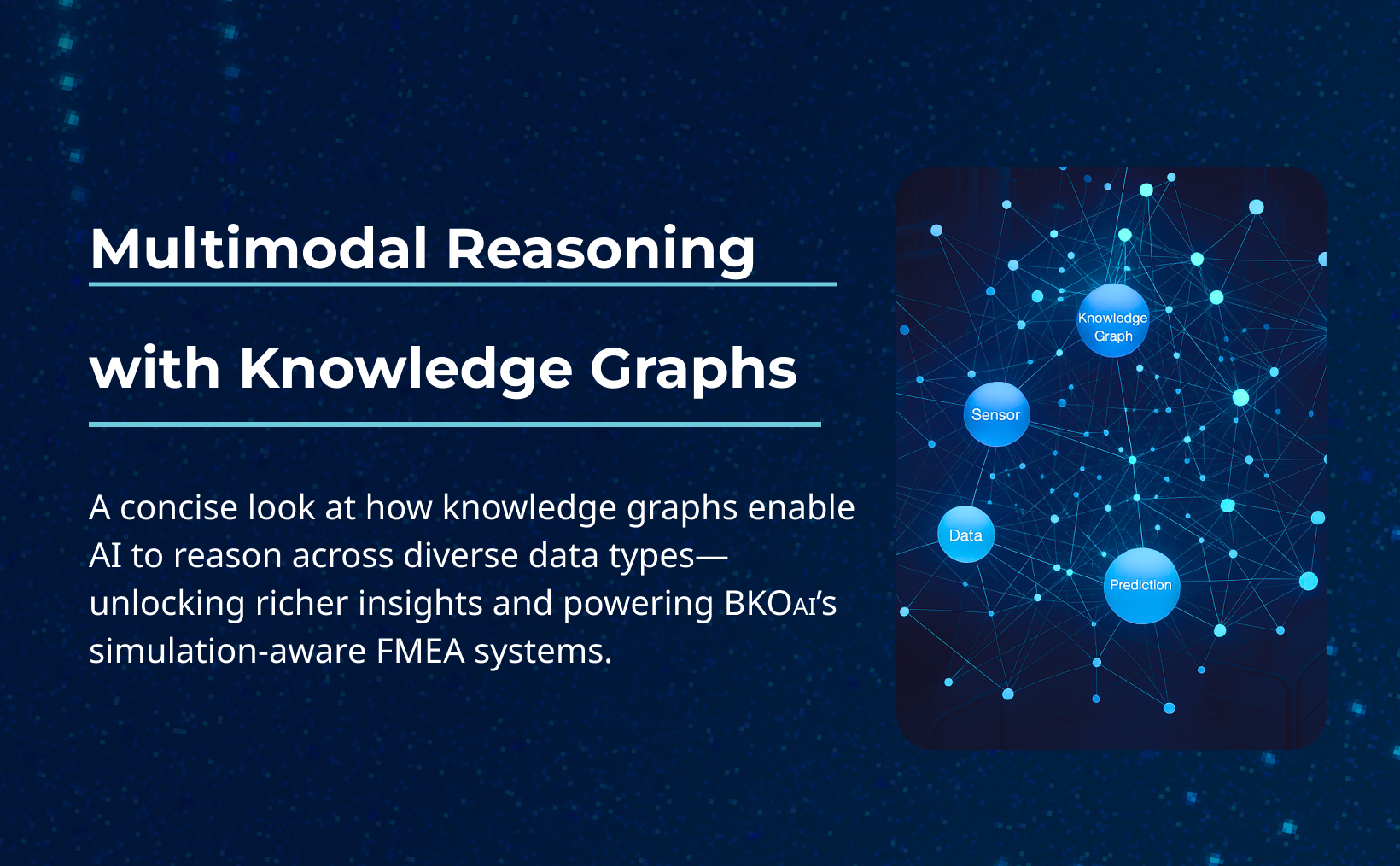Solutions
Solutions
Products
Products
Services
Services
Industries
Industries
Resources
Resources
About us
About us
Get started


As AI systems become more deeply embedded into industrial environments, engineers increasingly rely on multiple types of data—text, images, sensor logs, equipment manuals, and structured asset databases—to make informed decisions. The challenge is clear: how do we help AI reason across these diverse modalities the way a human expert would?
A knowledge graph represents information in a structured, interconnected form—linking entities (equipment, components, materials, documents) through relationships (depends on, causes, located in, connected to). This structure makes it possible for AI to “navigate” knowledge rather than merely recall isolated facts. This connectivity is crucial in industrial settings, where questions rarely involve a single data type:
A multimodal knowledge graph links all relevant sources—text, numbers, images, and simulation outputs—into one coherent structure. AI agents can traverse this structure the same way engineers follow causal chains across documents, diagrams, and historical logs.

Multimodal reasoning goes beyond simply combining images with text. It enables AI to understand how different types of information reinforce or contradict each other.
An equipment tag may point to a sensor trend.That trend may reference a manual specification. That manual may contain a diagram linked to a component. That component may appear in the FMEA knowledge graph.
The power comes from connecting these knowledge pathways.
Modern architectures—such as unified encoders, graph attention networks, and cross-modal transformers—allow AI to embed these modalities into a shared representation. CombFromined with the structure of a knowledge graph, the system doesn't just “store” information; it reasons across it.
This unlocks deeper capabilities: identifying patterns across systems, discovering hidden relationships, and generating insights that would be extremely difficult to surface through traditional search or manual review.

In many plants, Failure-Mode-and-Effects-Analysis (FMEA) knowledge lives in static spreadsheets, isolated databases, or tribal knowledge scattered across teams. When something goes wrong, engineers search through manuals, logs, and work orders, often without a unified view that connects causes, conditions, and historical patterns.
BKOAI’s Simulation-Aware FMEA System integrates these sources into a dynamic knowledge graph that provides real-time, multimodal reasoning for failure analysis.
When an engineer asks a question like: “What is the overheating risk of the main hydraulic pump?”
The system activates a coordinated reasoning process:
All of this context is merged into a single, explainable narrative generated by an AI agent that navigates the knowledge graph instead of searching isolated systems.
The result is a continuously evolving intelligence layer that transforms FMEA from static documentation into a living, data-driven decision engine.

As plants generate more data—from simulations, real-time sensors, AI assistants, and legacy systems—the ability to unify and reason across modalities becomes essential. Multimodal knowledge graphs provide:
At BKOAI, we see MMKGs as the foundation for next-generation industrial intelligence—powering deep search, autonomous analysis, simulation-aware decision making, and cross-system interoperability.